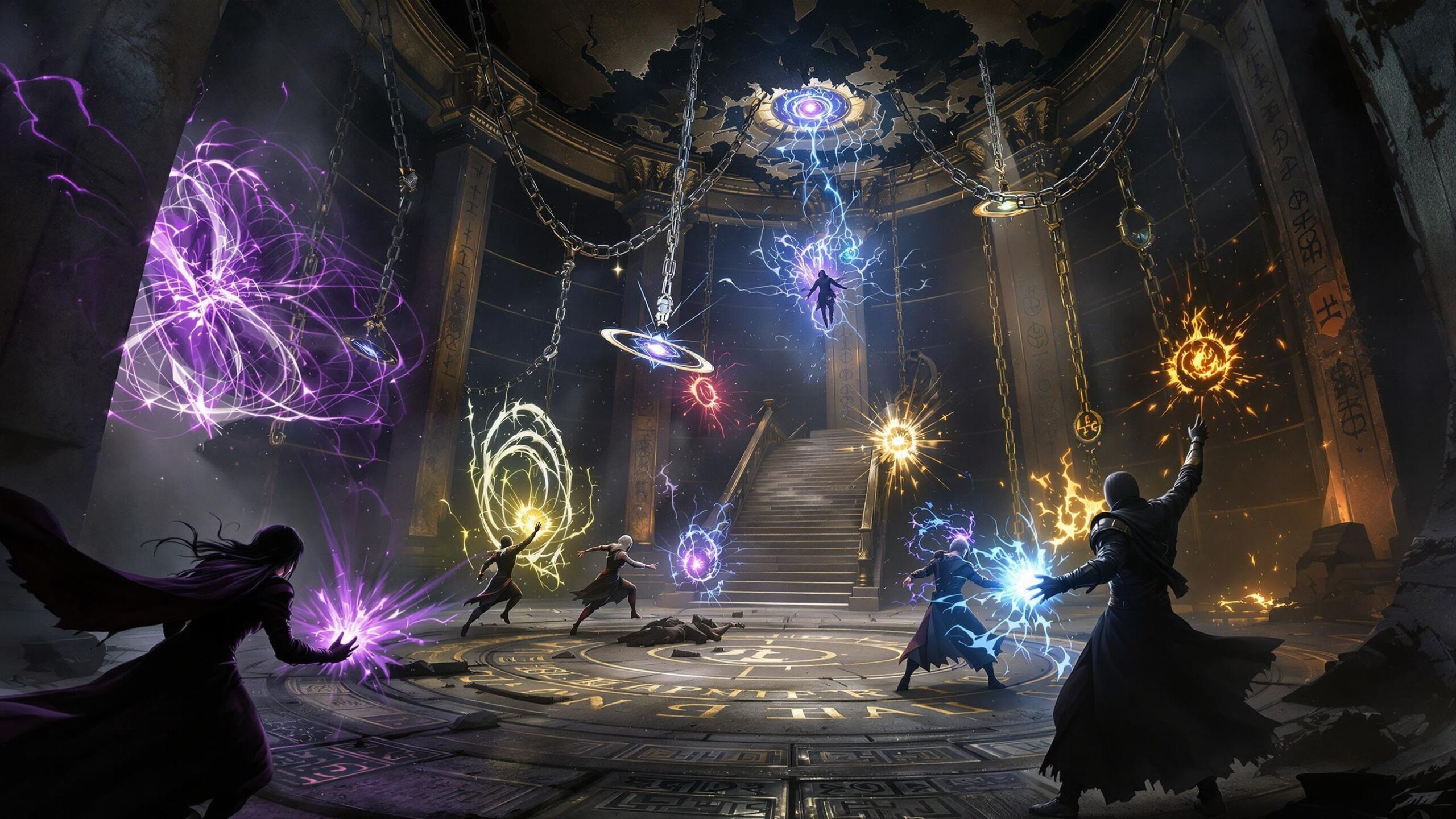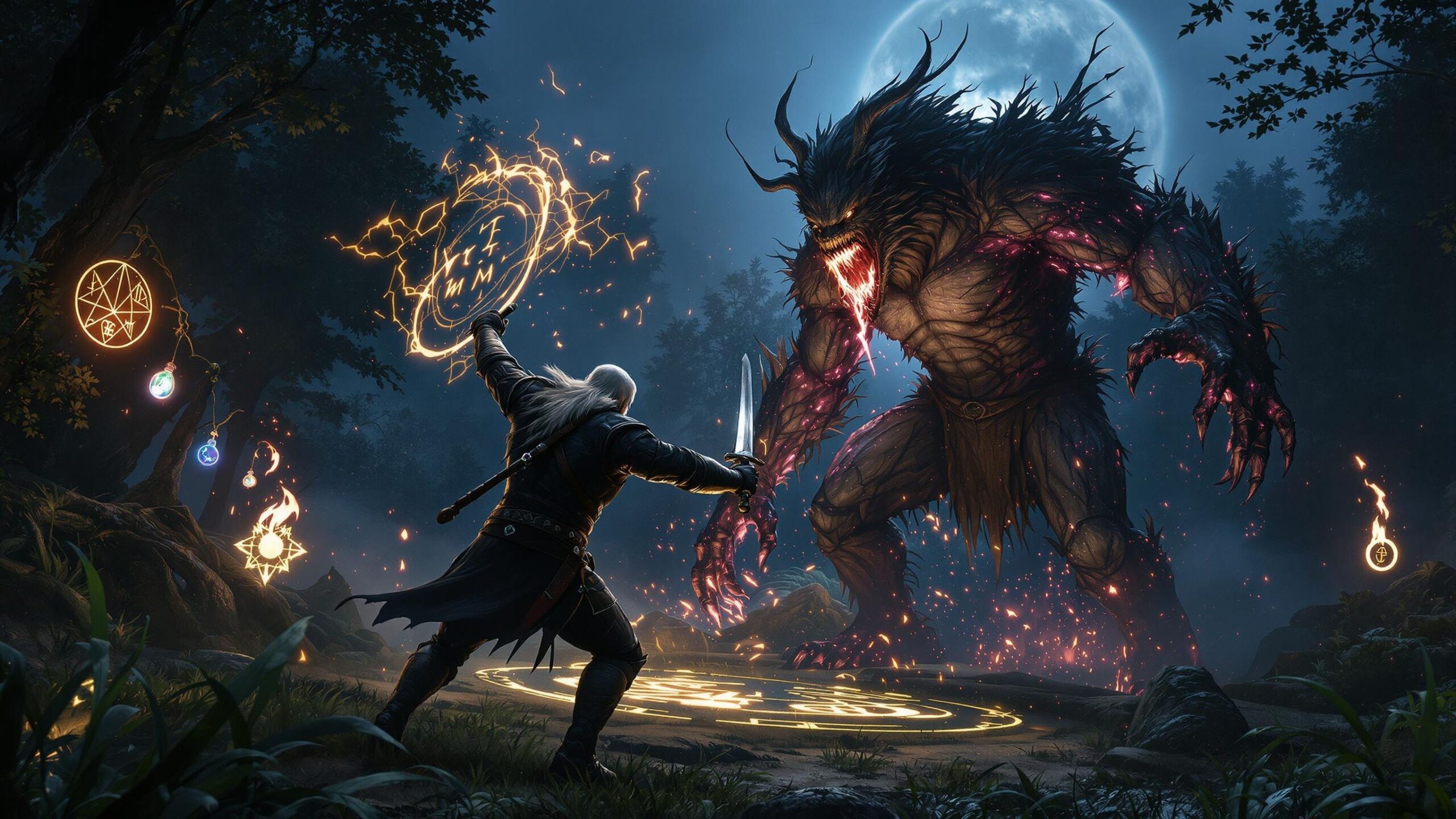Magic in The Witcher universe is not simply a flashy tool for destruction—it’s an unpredictable, volatile force that can shape destinies, topple kingdoms, and turn even the most carefully laid plans into chaos. From intricate enchantments to acts of pure elemental devastation, magic is wielded by sorcerers, sorceresses, druids, elves, and even mutant Witchers in cunning, often morally grey ways. But the most memorable uses of magic aren’t always the loudest—they’re the ones that are strategic, risky, or profoundly personal. These ten moments showcase the most clever, surprising, and emotionally charged applications of magic throughout The Witcher‘s books, games, and television adaptations.
#10: Yennefer Teleporting the Queen and Her Baby in The Witcher Series
In one of the most emotionally powerful scenes from the Netflix series, Yennefer is charged with protecting Queen Kalis of Lyria and her newborn daughter from an assassin wielding a deadly, worm-like monster. Outmatched and under constant attack, Yennefer teleports herself and the queen through a chaotic series of increasingly dangerous locations in a desperate bid for survival. The brilliance of this moment lies in how Yennefer uses magic not just as a weapon, but as a tool for mobility, misdirection, and strategic retreat. It’s not just about throwing fireballs—it’s about staying one step ahead of death. Each portal leads to a more dangerous place, showing the limits of her power and the toll teleportation takes on her. Ultimately, she cannot save everyone, but her clever use of portals, despite exhaustion, showcases just how dynamic and improvisational magic can be when survival—not domination—is the goal.
#9: Geralt’s Use of Yrden Against the Kayran
In The Witcher 2: Assassins of Kings, Geralt must battle the monstrous Kayran—a massive, Lovecraftian beast that’s been terrorizing ships near Flotsam. While raw swordplay alone wouldn’t suffice, Geralt uses the magic sign Yrden—a trap that immobilizes foes—to anchor the Kayran’s limbs in place. What makes this clever is not just the use of Yrden, but how it’s paired with the environment. Geralt prepares the battlefield in advance, weakening supports that eventually collapse onto the Kayran. This moment illustrates how Witchers combine tactical awareness, alchemy, and magic to defeat foes that are far beyond human capabilities. It’s not brute force that wins the day—it’s preparation and precision. Geralt turns a sign that’s often used for crowd control into a deadly trap for a boss-level enemy, showing just how versatile magic becomes in the hands of a master.
#8: Ciri’s Dimensional Portals
Ciri’s Elder Blood powers are among the most unique in the entire Witcher universe, and her ability to create dimensional portals is as unpredictable as it is powerful. While many moments feature Ciri using her abilities explosively, one of the cleverest applications is in The Witcher 3: Wild Hunt, when she uses her power to flee enemies by leaping between worlds. Unlike teleportation spells used by mages, Ciri’s portals can span dimensions—including worlds destroyed by the White Frost or dominated by elves. These aren’t just tactical retreats; they’re acts of survival that bend space and reality itself. Ciri doesn’t always control where she goes, but when she learns to harness this power, it becomes a tool for infiltration, rescue, and even interdimensional espionage. Her portals allow her to traverse time and reality—making her less of a sorceress and more of a living singularity with the universe at her fingertips.
#7: The Djinn’s Binding Wish
In the story “The Last Wish,” Geralt captures a djinn to heal his friend Dandelion but accidentally binds the spirit to himself. The true cleverness comes later, when Geralt realizes, Yennefer is attempting to trap the djinn for her own purposes—to restore her fertility. As the djinn begins to destroy everything around them, Geralt makes a final wish that ties his fate to Yennefer’s. The wording of the wish is never explicitly revealed, but it results in the djinn’s release. Geralt’s cleverness lies in understanding the rules of magical contracts and using them to protect someone he cares about. It’s not about domination—it’s about using logic and compassion to end a magical disaster. The scene is an intellectual battle as much as a magical one, and the emotional consequences of that wish echo through their lives for decades.
#6: Triss Merigold’s Healing Spell During the Battle of Sodden
During the legendary Battle of Sodden Hill, Triss Merigold proves herself not just as a battlefield mage, but as a tactical support sorceress. Rather than blasting enemies with fire or lightning, she uses her powers to protect, shield, and heal wounded soldiers on the frontlines. Her clever use of defensive spells, regeneration magic, and healing enchantments turn the tide of battle by keeping key fighters alive. In a world where flashy destruction often gets the spotlight, Triss’s intelligent and understated use of magic for preservation reveals the often-overlooked role of support casters in warfare. Her actions earn her the nickname “Fourteenth of the Hill,” and her legacy as a battle mage is forever tied to her ability to outthink—not just outfight—the enemy.
#5: Yennefer’s Illusion at the Council of Kings
In the books, Yennefer frequently uses illusion magic not to entertain, but to manipulate the political battlefield. One of her most cunning uses of illusion occurs during a council of monarchs and mages, where she casts subtle glamours to alter perceptions—hiding her true intentions and controlling the narrative in a room full of suspicious, power-hungry individuals. Unlike flashy displays of power, this moment showcases how Yennefer operates in layers. She uses her magic with finesse, shaping others’ perceptions to nudge events in her favor without drawing direct attention. It’s a chess game, not a brawl, and she plays it beautifully. In The Witcher universe, where manipulation is often more dangerous than monsters, Yennefer’s mastery of subtle magic elevates her above other sorceresses. It proves that raw power is only part of the equation—true mastery lies in knowing how to wield it without leaving fingerprints.
#4: Avallac’h’s Genetic Experiments and Ciri’s Prophetic Role
Avallac’h, the elven Sage and ancient sorcerer, operates on a level far beyond traditional spellcasting. One of the most unsettling but clever uses of magic in The Witcher 3 involves his secret laboratory, where he studies the Elder Blood lineage with the aim of creating a child capable of stopping the White Frost. Avallac’h isn’t casting fireballs—he’s using ancient magic, alchemy, and genetic manipulation to shape fate itself. His experiments are disturbingly clinical, but deeply intelligent. He understands the metaphysical structure of the universe, how Elder Blood interacts with magical fields, and how to stabilize Ciri’s chaotic power. While morally ambiguous, Avallac’h’s brilliance lies in his long-term vision. He sees magic not as a tool for war, but for survival on a cosmic scale. His secret work, while deeply invasive, demonstrates a high-stakes form of magic that manipulates bloodlines, prophecies, and interdimensional forces.
#3: Geralt’s Use of Axii in Diplomacy
While many associate the Witcher signs with combat, Geralt’s clever use of the Axii sign to manipulate minds offers one of the most subtle yet impactful applications of magic in the series. Whether calming a raging horse, defusing a violent situation, or persuading a hostile guard to look the other way, Axii is a psychological tool disguised as magic. In The Witcher 3, some of Geralt’s most brilliant moments come when he uses Axii not to dominate, but to influence—gently nudging events in a direction that avoids bloodshed. It also functions as a kind of lie detector and truth serum, often revealing hidden motives or convincing someone to confess. Geralt, who prefers to stay neutral and avoid unnecessary conflict, often uses Axii as a way to uphold his code without drawing his sword. Its magic used not for control, but for peacekeeping—and in a world of monsters and politics, that’s often the smarter play.
#2: Ciri’s Uncontrolled Shattering of the Tower of the Swallow
One of the most chilling and raw displays of magical power occurs when Ciri, in a moment of panic and rage, destroys the Tower of the Swallow. This isn’t magic channeled through training or deliberate casting—it’s magic unleashed as an emotional weapon. Trapped and hunted, Ciri screams, and the resulting magical outburst shatters time, space, and stone. What makes this clever is that it’s not just brute force—it’s a subconscious act of self-preservation that opens new realities. It shows how deeply magic is embedded in Ciri’s being. Unlike traditional sorcerers who study formulas and disciplines, Ciri is magic, and her ability to reshape the world simply through emotion redefines the scale of magical potential in The Witcher universe. The tower’s collapse sends ripples across dimensions, proving that cleverness isn’t always about intellect—it can be instinctive, raw, and terrifyingly real.
#1: The Conjunction of the Spheres
The most foundational and clever act of magic in The Witcher universe is one that happened long before the events of the books or games—the Conjunction of the Spheres. This cataclysmic event, in which multiple worlds collided and merged, introduced monsters, magic, and humans into the Continent. While it’s never fully explained whether the Conjunction was accidental or orchestrated, some scholars within the universe speculate that it may have been the result of magical experimentation or interdimensional ambition gone awry. Regardless of its origins, the cleverness lies in its legacy. It changed the very structure of the world, enabling the rise of Witchers, the spread of Elder Blood, and the birth of magic as a known force. Every single spell, sign, and monster-slaying elixir can trace its roots back to this one moment of cosmic fusion. Whether caused by accident or design, the Conjunction is the cleverest and most far-reaching use of magic in The Witcher, setting the stage for every triumph, tragedy, and transformation to come.
Magic in The Witcher is more than an arsenal—it’s a philosophy, a science, and sometimes a weapon of the heart. These clever uses of magic highlight how it shapes lives, battles, and entire realities. Whether it’s a sorceress teleporting across a continent, a girl screaming down a tower, or a mutant influencing minds with a whisper, these moments prove that the most unforgettable magic isn’t always the most explosive—it’s the magic that changes everything with subtlety, brilliance, or raw emotion. In a world where power often corrupts, the cleverest magic is the kind that changes the world without losing the soul.




